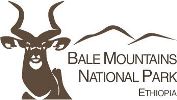Sustainable Natural Resource Management
Human settlement, cultivation and resources use inside BMNP has been increasing since the park was established in the 1970 and has now reached unsustainable levels, with coincident rapid resource degradation. As part of the BMNP GMP, human settlement and cultivation will be reduced and restricted to the Conservation & SNRM Zone through implementation of resource use agreements and voluntary resettlement, particularly of those with land rights elsewhere. Negative impacts on the ecosystem of remaining settlement and agriculture will be mitigated using restoration where necessary and pollution control in partnership with the Ecological Management Programme. Similarly, land use will be planned and coordinated both inside and outside the park to minimise the extent and environmental impact of different land use regimes on ecosystem health and function.
The Sustainable Natural Resource Management (SNRM) Programme of the BMNP GMP provides a framework for the development and implementation of sustainable natural resource management in the park and surrounding communities (in partnership with other stakeholders). The programme aims to convert currently unsustainable natural resource use in BMNP to sustainable levels of resource use through a participatory process where communities enter into joint natural resource management agreements with park management. The core of this strategy involves setting up natural resource management institutions and agreements with community management groups (CMG) in designated Conservation & SNRM Zones (see zoning scheme). The approach is based upon those used in Participatory Forest Management by GTZ in the Adaba-Dodola Area and by Farm Africa/SOS Sahel in the wider Bale eco-region and elsewhere in southern Ethiopia. Sustainable Natural Resource Management Agreements (SNRMA), facilitated and negotiated between park management and community resource management groups, will specify the type and amount of resources that can be used, by whom, and will lay out the methods, roles and responsibilities for community monitoring, regulation and resource protection. These agreements and their management and oversight are designed to be flexible and responsive to changing situations and needs. A key component of this programme is to build the capacity of both communities and park management to manage, regulate and monitor these agreements through training, experience sharing visits and a ‘learning by doing’ approach.
